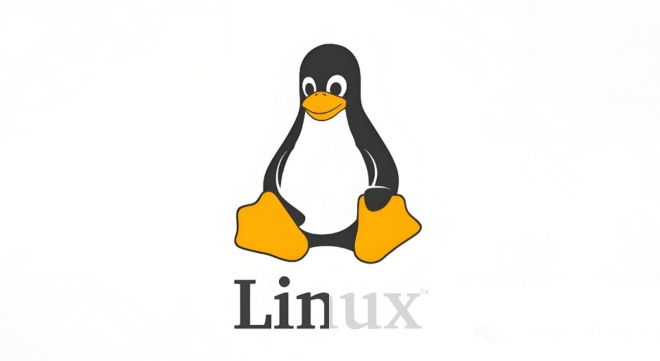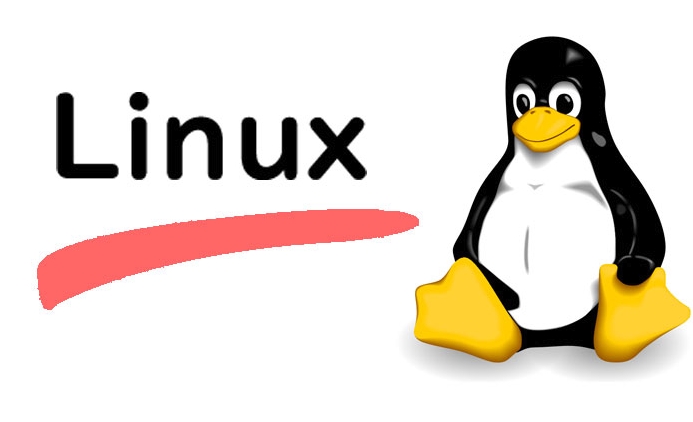Ext4 is best for general desktop or laptop use and environments requiring maximum stability, offering reliability and simplicity but lacking modern features like snapshots or checksums. 2. Btrfs is ideal for systems needing snapshots, rollbacks, and data integrity features, suitable for home NAS, workstations, and future-proof setups, though RAID 5/6 should be avoided due to instability. 3. XFS excels in enterprise environments with large files, databases, or virtualization, providing high scalability and throughput but does not support shrinking and performs poorly with many small files. Choose based on use case: Ext4 for stability, Btrfs for features, XFS for performance at scale.

When choosing a filesystem for Linux, three options often stand out: Ext4, Btrfs, and XFS. Each has its strengths and trade-offs depending on your use case—whether it’s desktop use, enterprise servers, or large-scale storage. Here's a practical comparison to help you decide which fits best.

1. Ext4: The Reliable Workhorse
Ext4 (Fourth Extended Filesystem) is the most widely used Linux filesystem and the default on many distributions like Ubuntu and CentOS (older versions).
Pros:

- Stable and mature: Decades of real-world use, thoroughly tested.
- Good performance for general use: Fast file access, especially on smaller to medium-sized systems.
-
Simple to manage: Tools like
e2fsckare reliable and well-documented. - Backward compatible with Ext2/Ext3.
Cons:
- No built-in snapshots or checksums: Lacks modern features like data integrity verification.
- No native support for pooling or RAID—relies on LVM or mdadm.
- Fragmentation can become an issue over time, especially with heavy write loads.
Best for: Desktop systems, traditional servers, and environments where stability and simplicity matter most.

2. Btrfs: The Feature-Rich Modern Option
Btrfs (B-tree Filesystem) was designed to bring modern capabilities to Linux, inspired by ZFS but integrated into the mainline kernel.
Pros:
- Snapshots and rollbacks: Great for system updates or backups.
- Built-in RAID support (0, 1, 10, and limited 5/6).
- Copy-on-write (CoW): Helps prevent data corruption.
- Checksums for data and metadata: Detects silent data corruption.
- Subvolumes and transparent compression (e.g., zlib, zstd).
- Online resizing and defragmentation.
Cons:
- RAID 5/6 still considered unstable—use with caution.
- Can be slower under heavy random write loads due to CoW.
- More complex to troubleshoot when things go wrong.
- Still maturing: Some advanced features aren’t as battle-tested as Ext4 or XFS.
Best for: Systems needing snapshots (like workstations with frequent updates), home servers, or NAS setups where data integrity and flexibility are key.
? Many now use Btrfs with RAID 1 or plain disks for safer operation, avoiding RAID 5/6 entirely.
3. XFS: The Scalable Powerhouse
XFS excels in handling large files and high-throughput environments. It’s the default on RHEL, CentOS, and Fedora for server installations.
Pros:
- Excellent performance with large files (ideal for video editing, databases, VM images).
- Highly scalable: Handles multi-terabyte filesystems with ease.
- Robust journaling and fast crash recovery.
- Supports metadata checksums (from kernel 4.15 ).
- Efficient allocation for large storage pools.
Cons:
- Cannot shrink (shrink) the filesystem—only grow.
- No built-in snapshots or encryption (relies on LVM for snapshots).
- Slower with many small files compared to Ext4 or Btrfs.
- Less flexible for dynamic changes.
Best for: Enterprise servers, media storage, databases, and environments with large sequential I/O.
Quick Decision Guide
| Use Case | Recommended Filesystem |
|---|---|
| General desktop or laptop | Ext4 |
| System snapshots and rollbacks | Btrfs |
| Large files / media servers | XFS |
| Databases or virtualization | XFS or Ext4 |
| Home NAS with redundancy | Btrfs (RAID 1) |
| Maximum stability required | Ext4 |
| Future-proofing with features | Btrfs |
Final Thoughts
- Stick with Ext4 if you want “it just works” reliability.
- Choose Btrfs if you value snapshots, checksums, and modern storage features—just avoid unstable RAID modes.
- Go with XFS when dealing with large files and high throughput, especially in enterprise environments.
None is universally “best”—it comes down to your priorities: stability, features, or performance at scale.
Basically, pick based on what you’re doing, not what’s trendy.
The above is the detailed content of Comparing Linux Filesystems: Ext4 vs. Btrfs vs. XFS. For more information, please follow other related articles on the PHP Chinese website!

Hot AI Tools

Undress AI Tool
Undress images for free

Undresser.AI Undress
AI-powered app for creating realistic nude photos

AI Clothes Remover
Online AI tool for removing clothes from photos.

Clothoff.io
AI clothes remover

Video Face Swap
Swap faces in any video effortlessly with our completely free AI face swap tool!

Hot Article

Hot Tools

Notepad++7.3.1
Easy-to-use and free code editor

SublimeText3 Chinese version
Chinese version, very easy to use

Zend Studio 13.0.1
Powerful PHP integrated development environment

Dreamweaver CS6
Visual web development tools

SublimeText3 Mac version
God-level code editing software (SublimeText3)
 Install LXC (Linux Containers) in RHEL, Rocky & AlmaLinux
Jul 05, 2025 am 09:25 AM
Install LXC (Linux Containers) in RHEL, Rocky & AlmaLinux
Jul 05, 2025 am 09:25 AM
LXD is described as the next-generation container and virtual machine manager that offers an immersive for Linux systems running inside containers or as virtual machines. It provides images for an inordinate number of Linux distributions with support
 How to troubleshoot DNS issues on a Linux machine?
Jul 07, 2025 am 12:35 AM
How to troubleshoot DNS issues on a Linux machine?
Jul 07, 2025 am 12:35 AM
When encountering DNS problems, first check the /etc/resolv.conf file to see if the correct nameserver is configured; secondly, you can manually add public DNS such as 8.8.8.8 for testing; then use nslookup and dig commands to verify whether DNS resolution is normal. If these tools are not installed, you can first install the dnsutils or bind-utils package; then check the systemd-resolved service status and configuration file /etc/systemd/resolved.conf, and set DNS and FallbackDNS as needed and restart the service; finally check the network interface status and firewall rules, confirm that port 53 is not
 How would you debug a server that is slow or has high memory usage?
Jul 06, 2025 am 12:02 AM
How would you debug a server that is slow or has high memory usage?
Jul 06, 2025 am 12:02 AM
If you find that the server is running slowly or the memory usage is too high, you should check the cause before operating. First, you need to check the system resource usage, use top, htop, free-h, iostat, ss-antp and other commands to check CPU, memory, disk I/O and network connections; secondly, analyze specific process problems, and track the behavior of high-occupancy processes through tools such as ps, jstack, strace; then check logs and monitoring data, view OOM records, exception requests, slow queries and other clues; finally, targeted processing is carried out based on common reasons such as memory leaks, connection pool exhaustion, cache failure storms, and timing task conflicts, optimize code logic, set up a timeout retry mechanism, add current limit fuses, and regularly pressure measurement and evaluation resources.
 Install Guacamole for Remote Linux/Windows Access in Ubuntu
Jul 08, 2025 am 09:58 AM
Install Guacamole for Remote Linux/Windows Access in Ubuntu
Jul 08, 2025 am 09:58 AM
As a system administrator, you may find yourself (today or in the future) working in an environment where Windows and Linux coexist. It is no secret that some big companies prefer (or have to) run some of their production services in Windows boxes an
 How to Burn CD/DVD in Linux Using Brasero
Jul 05, 2025 am 09:26 AM
How to Burn CD/DVD in Linux Using Brasero
Jul 05, 2025 am 09:26 AM
Frankly speaking, I cannot recall the last time I used a PC with a CD/DVD drive. This is thanks to the ever-evolving tech industry which has seen optical disks replaced by USB drives and other smaller and compact storage media that offer more storage
 How to find my private and public IP address in Linux?
Jul 09, 2025 am 12:37 AM
How to find my private and public IP address in Linux?
Jul 09, 2025 am 12:37 AM
In Linux systems, 1. Use ipa or hostname-I command to view private IP; 2. Use curlifconfig.me or curlipinfo.io/ip to obtain public IP; 3. The desktop version can view private IP through system settings, and the browser can access specific websites to view public IP; 4. Common commands can be set as aliases for quick call. These methods are simple and practical, suitable for IP viewing needs in different scenarios.
 How to Install NodeJS 14 / 16 & NPM on Rocky Linux 8
Jul 13, 2025 am 09:09 AM
How to Install NodeJS 14 / 16 & NPM on Rocky Linux 8
Jul 13, 2025 am 09:09 AM
Built on Chrome’s V8 engine, Node.JS is an open-source, event-driven JavaScript runtime environment crafted for building scalable applications and backend APIs. NodeJS is known for being lightweight and efficient due to its non-blocking I/O model and
 How to Setup MySQL Replication in RHEL, Rocky and AlmaLinux
Jul 05, 2025 am 09:27 AM
How to Setup MySQL Replication in RHEL, Rocky and AlmaLinux
Jul 05, 2025 am 09:27 AM
Data replication is the process of copying your data across multiple servers to improve data availability and enhance the reliability and performance of an application. In MySQL replication, data is copied from a database from the master server to ot






